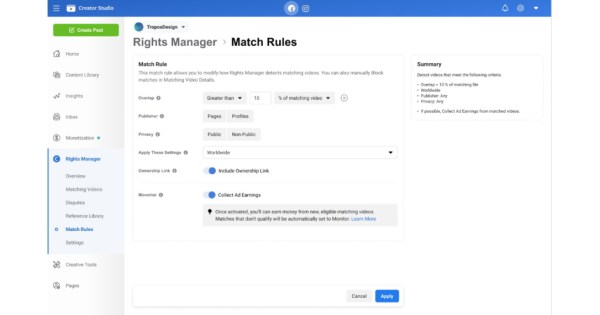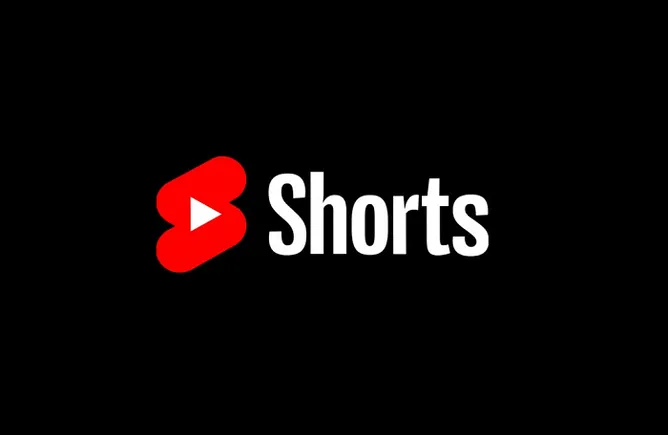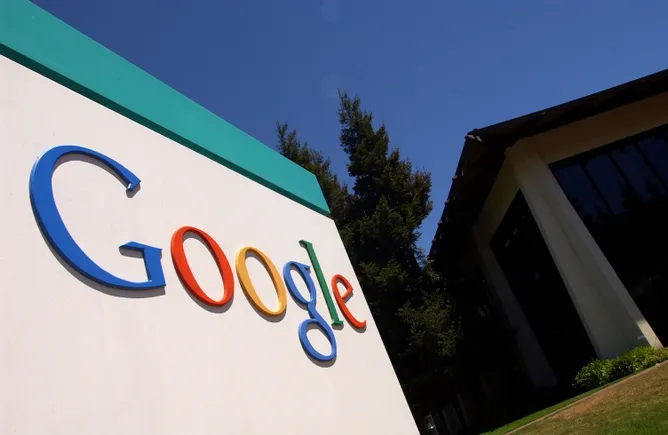This week’s Media Briefing checks in with publishers about ad revenue from the various social platforms to see how the all of the changes from this past summer have impacted ad spend.
Earlier this year, some publishers voiced concerns that their ad revenue-sharing deals with Snapchat were yielding less and less money. Half-a-year later, that narrative seems to be holding true.
To bridge the Snap gap, publishers are focusing more on selling brands directly on sponsored posts to run on TikTok and Instagram in particular, but publishers are reporting similar revenue concerns for Facebook and Twitter.
Here’s a look at the state of social media monetization for publishers in 2023
Survival of the fittest on Snap
Two publishers who spoke on the condition of anonymity regarding Snapchat called out a specific change made by the platform that they argue is what caused a steep decline in both views and subsequent revenue.
In August, Snap removed the carousel of Stories that specifically highlights accounts that users follow from their Discover page and merged those Stories with the main feed on the Discover page, which includes popular content from all public accounts surfaced via its algorithm.
According to a Snap spokesperson, the move was made in an attempt to simplify the user’s consumption of content on the Discover page. The publishers, however, feel as though this change impacted their ability to reach followers on the platform.
“This time last year, [one] million or two million people would read the same Story. Today, maybe 60,000 people read that Story. And when our revenue is based on the ad impressions in that Story, you can do the math of how far it’s unfortunately sunk,” said one of the publisher execs.
Later, after crunching the numbers for me, the exec explained that revenue has fallen approximately 75% year over year on Snapchat.
The Snap spokesperson said that this change was not a universal experience for all of its media partners (of which there are over 900) and that this change has led to an increase in both viewers and time spent on the platform, pointing to the company’s Q2 earnings report, which would not cover the time frame from when this change took place.
Given the amount of rev share deals the platform now has with media companies, the spokesperson continued that not every publisher will experience the same level of success through this change, stating it was an unavoidable result.
Translation: There seem to be more publishers with rev-share deals than advertising dollars to go around. In the second quarter of 2023, Snap’s ad revenue declined by 4% year over year, marking the second straight quarterly ad revenue decline for the company.
PinkNews is also experiencing a decline in money earned through its rev share deal with Snap. While revenue earned from its rev share deal with Snapchat is “not insignificant … It’s just not as good as it was,” said Benjamin Cohen, CEO of the U.K.-based LGBTQ+ media company.
“It’s quite hard to pinpoint the precise reasons why revenue [isn’t] as high as it was, but the impact of increased competition on the Discover feed” is likely to have played some role, said Cohen. And it’s not just other publishers that companies like PinkNews are up against on Discover: “Snap Star influencers are competing for the same audience” as well.
In 2022, 80% of PinkNews’ revenue came from social media ads via deals with the platforms – the majority of which came from Snap. Now that revenue stream is less than 50% and direct-sold advertising is picking up the slack.
TikTok and Instagram are the backbones
As direct-sold deals become more significant for PinkNews’ business, so have TikTok and Instagram. That’s because there is more demand from direct advertiser clients on those platforms than on Snapchat, Cohen said. And this year in particular, he said his team has received an increase in RFPs for TikTok over any other platform, some even going so far as to reallocate budgets from other platforms to TikTok.
For Gallery Media, which currently sees an equal split interest from advertisers for both TikTok and Instagram as the top platforms for their direct-sold ad campaigns, revenue from those deals has increased upwards of 50% year over year, said Chris Anthony, the company’s CRO.
Facebook and X teeter on the edge
Publishers have been facing referral traffic declines from Facebook and X for a while now, but the impact on revenue is still being felt.
“It also has a revenue tie-in because, obviously, we make money off of people coming to our sites. And that’s a big hurdle that we’re going through right now with all the platforms – these changes to the algorithms that negatively impact our traffic – with the exception of Instagram, which is actually a positive in traffic referral,” said one social media lead at a digital publication.
Referral traffic from X has decreased 60% year over year while Facebook has decreased 30% year over year for the publication, and while that may not seem like a lot, the social media lead clarified that that equates to tens of millions of site visitors.
For PinkNews, X used to be the second highest revenue contributor for the media company thanks to its Amplify program, where Cohen said his team co-sold advertising deals with X’s sales team.
Between advertisers pulling money from the platform and the exodus of many executives who Cohen said were key to PinkNews’ relationship with X, the revenue coming in from X now is next to nothing.
“Plus it’s not that great a place for us to be putting out content just because of contextually what else is on there,” said Cohen.
What we’ve heard
“We’re confident and we’re seeing momentum in terms of brands coming back into the market, or, at least theoretically, coming back with queries or RFPs in terms of the fourth quarter and going into 2024. What’s that going to mean? I can’t say that yet.”
— Eric Danetz, Reuters CRO, on the latest episode of the Digiday Podcast.
After Digiday reported on the workforce diversity reports publishers released this summer, one trend in the data that stood out was an uptick in the percentage of people choosing not to disclose or self-report their ethnic or racial background, in some cases. This has gone up by one to three percentage points year over year at companies like Condé Nast, Vox Media and The Washington Post.
For example, 7% of Condé Nast’s employees were recorded as “undeclared” in its latest workforce diversity report based on 2022 data, up from 4% in 2021. There was also an increase in the employees who chose not to share their information in Condé Nast’s editorial department and in senior leadership positions, up one percentage point year over year, to 8% and 4%, respectively.
Of Vox Media’s employees in leadership roles, 3% also did not disclose their information in 2022, up from 1% in 2021.
But the most notable uptick was at The Washington Post. In its news and opinion department, 9% of employees did not disclose their information, up from 6% last year. And 5% of its employees in leadership positions in 2023 didn’t participate in the data, up from 3% in 2022.
A spokesperson at the Post said this is likely due to recent international hires, as part of the company’s strategy to expand its global footprint. Collecting demographic data can be more challenging overseas, as each country has their own laws to abide by, noted Gabi Novacek, managing director and partner at Boston Consulting Group’s Chicago office.
In its 2022 diversity report, BuzzFeed found that 11% of its employees did not provide their personal data, up from 5% in 2021. BuzzFeed CEO Jonah Peretti noted in the report that the company saw a 115% increase in U.S. employees who did not share their racial background in their HR system Workday. In other words, BuzzFeed’s workforce diversity data represents 89% of its workforce.
Peretti’s explanation for the gap? It was the first time Complex Networks and HuffPost employees were asked to share their personal data with BuzzFeed (BuzzFeed acquired HuffPost in November 2020 and Complex in June 2021). — Sara Guaglione
Numbers to know
20%: The portion of the world’s top 1,000 websites that have blocked site crawler bots from AI services that try to gather data to inform their technology.
10 weeks: The scheduled length of the “first monopoly trial in the modern internet era” – U.S. et al v. Google – that kicks off on Tuesady. The Justice Department spent three years building a case against Google, alleging that the search platform company illegally throttled competition.
$360 billion: The amount of money that ad spending in the U.S. is expected to total in 2023, growing 5% year over year, according to Brian Wieser, a media analyst and author of the Madison and Wall newsletter.
What we’ve covered
How The Trade Desk’s new sub-floor bidding tactic will affect SSPs, publishers:
As of this month, The Trade Desk is no longer letting publisher- or SSP-dictated floor prices influence the bids they send out.
According to ad tech experts, this is likely to negatively affect SSPs’ businesses, but the jury is still out on how publishers stand to be affected by this move — whether it’s good, bad or ultimately neutral.
Read more about the latest move by The Trade Desk and how it plays into the DSP’s larger plans here.
Publishers’ workforce diversity reports released this summer show steady improvement in newsroom diversity:
Gannett, Insider and The Washington Post have released their annual reports on the diversity of their workforces, revealing very little — if any — change in overall employee diversity year over year.
Within their newsrooms, both Insider and The Washington Post did improve the diversity of their editorial staffs.
See more data from publishers’ diversity reports here.
Digiday+ Research deep dive: Are publishers cooling on Facebook?
Digiday’s survey of 200 publisher professionals found that publishers are potentially cooling on Facebook.
While 91% of publisher pros said they posted content to Facebook in the last month, this is down from the 99% who said the same last year.
Learn more about how publishers are approaching Facebook here.
What we’re reading
Spotify won’t sell ads against white noise podcasts:
As the advertising industry cracks down on junky ad inventory, Spotify is also limiting the monetization of white noise podcasts and other ambient sound shows, according to Bloomberg.
Meanwhile, Spotify’s $1 billion bet on celebrity podcasts is proving to be unprofitable: The podcast deals with celebrities like Kim Kardashian, the Obamas and Prince Harry and Meghan Markle are not reaping the rewards that Spotify thought they would, according to a report by The Wall Street Journal. Most of those celebrity-driven shoes are not profitable and staff cuts have taken place as a result.
NPR’s chief executive is stepping down at the end of the year:
After four years, CEO John Lansing is retiring and is currently searching for his successor, The New York Times reported.
Atlanta magazine’s management and staff are at odds over ‘woke’ coverage:
Three of the magazine’s six full-time staffers have resigned over “untenable corporate interference” over coverage as the publication’s executives called recent stories “divisive,” writes The Washington Post.
Last month, Gannett’s USA Today network published a series of articles using generative AI tech covering high school sports, many of which were riddled with errors. The publisher suspended the use of AI after receiving a baptism by fire on X (formerly Twitter), but rather than ditching the technology altogether, Futurism reported that Gannett is just rewriting those articles manually.









